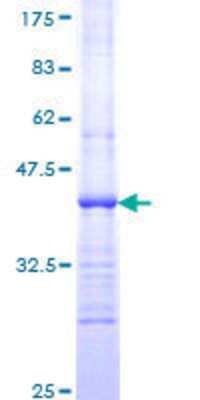TSC1: Proteins and Enzymes
TSC1 (Tuberous sclerosis 1), or hamartin, is a tumor suppressor which interacts with tumor suppressor TSC2 (tuberin) to form a cytoplasmic heterodimer. Mutations in either hamartin or tuberin are responsible for tuberous sclerosis (TSC), an autosomal dominant disease characterized by renal dysfunction, seizures, developmental delays, benign hamartomas and low grade neoplasms predominantly affecting the CNS, kidney, lung, skin, and heart. The TSC1/TSC2 complex suppresses cell growth by inhibiting mTOR, with TSC1 acting to inhibit the ubiquitination of TSC2, leading to increased cellular levels of TSC2 and thus enhancing its catalytic activity as a GTPase-activating protein for Rheb. TSC1 and TSC2 are also involved in the G2/M transition of the cell cycle through their interactions with CDK1 and cyclin B1. TSC1 has also been shown to interact with F-actin and ERM (Ezrin-Radixin-Moesin) proteins, implying a role in the modulation of cell adhesion and morphology.
2 results for "TSC1 Proteins and Enzymes" in Products
2 results for "TSC1 Proteins and Enzymes" in Products
TSC1: Proteins and Enzymes
TSC1 (Tuberous sclerosis 1), or hamartin, is a tumor suppressor which interacts with tumor suppressor TSC2 (tuberin) to form a cytoplasmic heterodimer. Mutations in either hamartin or tuberin are responsible for tuberous sclerosis (TSC), an autosomal dominant disease characterized by renal dysfunction, seizures, developmental delays, benign hamartomas and low grade neoplasms predominantly affecting the CNS, kidney, lung, skin, and heart. The TSC1/TSC2 complex suppresses cell growth by inhibiting mTOR, with TSC1 acting to inhibit the ubiquitination of TSC2, leading to increased cellular levels of TSC2 and thus enhancing its catalytic activity as a GTPase-activating protein for Rheb. TSC1 and TSC2 are also involved in the G2/M transition of the cell cycle through their interactions with CDK1 and cyclin B1. TSC1 has also been shown to interact with F-actin and ERM (Ezrin-Radixin-Moesin) proteins, implying a role in the modulation of cell adhesion and morphology.
| Applications: | WB, ELISA, MA, AP |
| Applications: | AC |


![Western Blot: TSC1 Antibody Blocking Peptide [NBP1-76618PEP] Western Blot: TSC1 Antibody Blocking Peptide [NBP1-76618PEP]](https://resources.bio-techne.com/images/products/TSC1-Peptide-Western-Blot-NBP1-76618PEP-img0001.jpg)